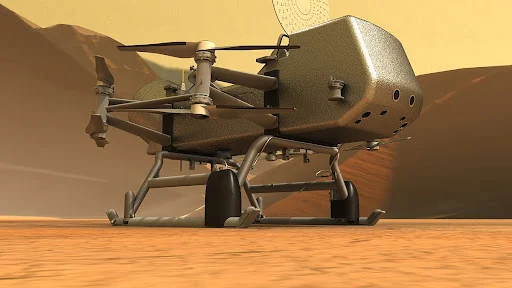It is planned to be launched in June 2027. It would be the first aircraft on Titan and is intended to make the first powered and fully controlled atmospheric flight on any moon, with the intention of studying prebiotic chemistry and extraterrestrial habitability.
When was the Dragonfly mission launched?
Dragonfly is scheduled for launch in 2027, landing on Titan in 2034. The budget proposal reflects an 18.1% reduction from the $400.1 million Dragonfly received in fiscal year 2023.
Why is it called Dragon fly?
He stated that the Romanian word for Devil was “drac,” but that drac was also the Romanian word for dragon. He thought that eventually the Romanian name for the Devil's Fly was erroneously translated to the English Dragon Fly and this eventually evolved into the “dragonfly!”
Who built dragonfly?
How will dragonfly be powered?
How will Dragonfly be powered? Dragonfly will use a large lithium-ion battery as its power source, which is designed to be recharged by a Multi-Mission Radioisotope Thermoelectric Generator (MMRTG) between flights
What's distance between Earth & Titan
The distance between Earth and Titan is 746 million miles, or 1.2 billion kilometers. Titan's atmosphere is approximately 95 percent nitrogen with traces of methane and it is the only solar system body besides Earth and Venus with a solid surface and thick atmosphere.
How big is the NASA dragonfly?
Dragonfly is a quadcopter drone with a nominal mass of 400 to 450 kg and will be roughly the size of the largest Mars rovers. It flies using 8 rotors, attached as four pairs to outriggers mounted on the side of the body. The craft can fly at about 10 m/s, and reach altitudes of 4000 m.
NASA's Dragonfly Mission to Titan: Exploring the Potential for Life
NASA's Dragonfly mission is a planned rotorcraft-lander that will explore Saturn's largest moon, Titan. The mission is scheduled to launch in 2027 and land on Titan in 2034. Dragonfly will use its eight rotors to fly to dozens of different locations on Titan, looking for evidence of prebiotic chemistry and the potential for life.
Titan is a very interesting moon. It has a thick atmosphere that is made up of nitrogen and methane, and it has lakes and rivers of liquid methane and ethane. The surface of Titan is also covered in organic compounds, which are the building blocks of life.
Dragonfly will be the first spacecraft to fly on another planet's atmosphere. It will use its rotors to travel over long distances and to land in difficult-to-reach places. The mission will carry a variety of instruments to study Titan's atmosphere, surface, and subsurface.
One of the main goals of the Dragonfly mission is to search for prebiotic chemistry. Prebiotic chemistry is the chemical processes that led to the formation of life on Earth. Dragonfly will study the composition of Titan's atmosphere and surface to see if it contains the same chemicals that were present on Earth when life first emerged.
Dragonfly will also search for the potential for life on Titan. The mission will look for evidence of liquid water, which is essential for life as we know it. It will also look for organic compounds that are complex enough to be considered biosignatures, or signs of life.
The Dragonfly mission is a groundbreaking mission that will help us to understand the potential for life on Titan. It is a challenging mission, but it has the potential to make major discoveries about the origins of life in our solar system.
Here are some of the key features of the Dragonfly mission:
- It is the first mission to fly a rotorcraft on another planet.
- It will explore a variety of different environments on Titan, including organic dunes, lakes, and rivers.
- It will carry a variety of instruments to study Titan's atmosphere, surface, and subsurface.
- The mission will last for at least two years.
The Dragonfly mission is a major step forward in our exploration of Titan and the search for life beyond Earth. It is a mission that has the potential to make major discoveries and to change our understanding of the universe.



